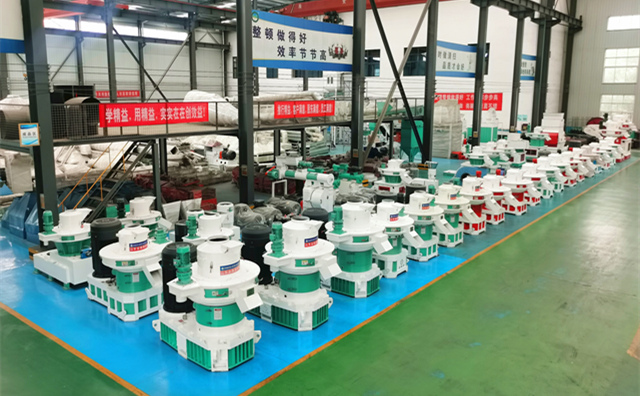Biomass pellet fuel is the use of “waste” in agricultural harvested crops. Biomass fuel pellet machinery directly utilizes the seemingly useless straw, sawdust, corncob, rice husk, etc. through compression molding. The way to turn these wastes into treasures is to need biomass briquette fuel boilers.
The working principle of biomass pellet mechanical fuel boiler combustion: biomass fuel is evenly spread on the upper grate from the feeding port or the upper part. After ignition, the induced draft fan is turned on, the volatilization in the fuel is analyzed, and the flame burns downward. The area formed by the suspended grate quickly forms a high temperature area, which creates conditions for continuous and stable ignition. While burning, it falls down, falls on the high-temperature hanging grate for a while, then continues to fall, and finally falls on the lower grate. The incompletely burned fuel particles continue to burn, and the burned out ash particles are removed from the lower grate. Discharge into the ash hopper of the ash discharge device. When the ash accumulation reaches a certain height, open the ash discharge gate and discharge it together. In the process of fuel falling, the secondary air distribution port supplements a certain amount of oxygen for suspension combustion, the oxygen provided by the third air distribution port is used to support the combustion on the lower grate, and the completely burned flue gas leads to the convection heating surface through the flue gas outlet. . When the large particles of smoke and dust pass upward through the partition, they are thrown into the ash hopper due to inertia. The slightly smaller dust is blocked by the dust removal baffle net and most of them fall into the ash hopper. Only some extremely fine particles enter the convective heating surface, which greatly reduces the convective heating. The dust accumulation on the surface improves the heat transfer effect.
The characteristics of fuel combustion produced by biomass pellet machinery are:
① It can quickly form a high temperature zone, and stably maintain the state of stratified combustion, gasification combustion and suspension combustion. The flue gas stays in the high temperature furnace for a long time. After multiple oxygen distribution, the combustion is sufficient and the fuel utilization rate is high, which can be fundamentally solved. Black smoke problem.
②The matching boiler has low original concentration of soot emission, so the chimney is not needed.
③The fuel burns continuously, the working condition is stable, and it is not affected by the addition of fuel and fire, and the output can be guaranteed.
④High degree of automation, low labor intensity, simple and convenient operation, without complicated operation procedures.
⑤ The fuel has wide applicability and no slagging, which solves the problem of easy slagging of biomass fuels.
⑥ Due to the use of gas-solid phase separation combustion technology.
It also has the following advantages:
a Most of the volatiles sent from the high-temperature pyrolysis combustion chamber to the gas-phase combustion chamber are hydrocarbons, which are suitable for low over-oxygen or under-oxygen combustion, and can achieve no black smoke combustion, which can effectively suppress the generation of “thermo-NO”.
b During the pyrolysis process, it is in an oxygen-deficient state, which can effectively prevent the nitrogen in the fuel from being converted into toxic nitrogen oxides. The pollutant emissions from the mechanical combustion of biomass fuel pellets are mainly a small amount of air pollutants and solid wastes that can be comprehensively utilized.
Post time: Jun-15-2022










